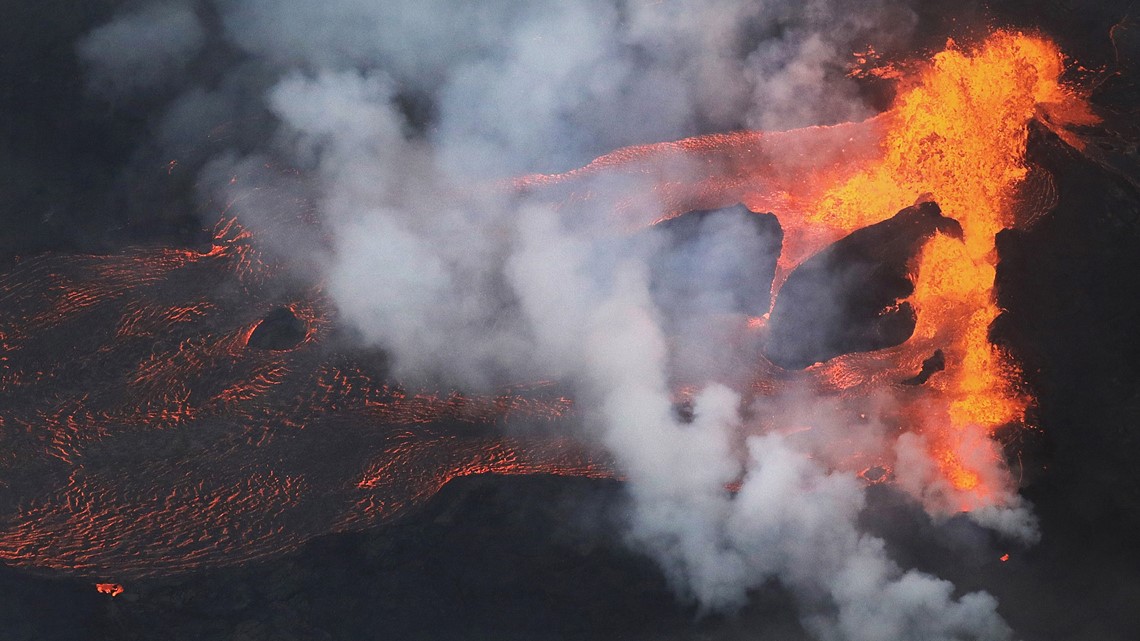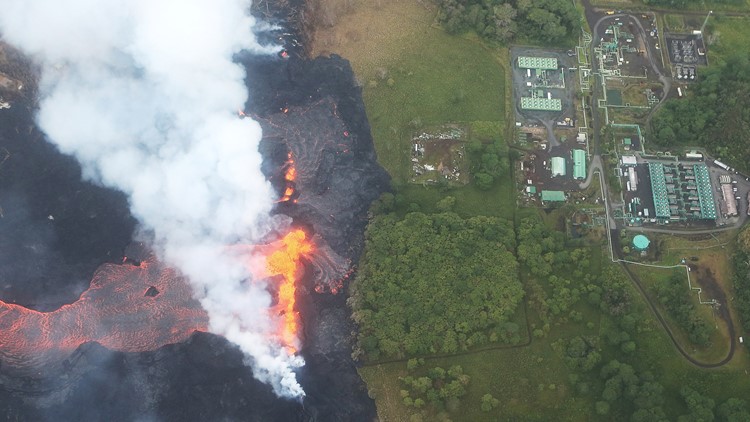Civil defense authorities in Hawaii were scrambling to firm up contingency plans after hot, powerful lava flowing from Hawaii's erupting Kilauea volcano reached the edge of a Big Island power plant.
The lava flow entered the 800-acre property of the Puna Geothermal Venture Plant before stalling at a swale about 300 yards from the nearest underground, geothermal well. If lava breaches the well, authorities fear it could release hydrogen sulfide, a toxic and flammable gas.
"Explosive eruption occurred, causing ash plume," the Hawaii County Civil Defense tweeted late Monday. "Lava crossed to PGV. Officials collaborating to ensure safety."
Most of the wells have been capped with a thick, steel plate. But Thomas Travis, an administrator of the Hawaii Emergency Management Agency, said the intense heat could diminish the strength of the metal.


“That’s why having lava flow across the well causes some uncertainties that have to be dealt with," he said. "To our knowledge, no one has faced this before."
The plant has been shut down, and tens of thousands of gallons of flammable gas stored at the site have been removed.
County, state and federal authorities are monitoring the flow and working with PGV "to ensure the safety of the surrounding communities," the civil defense agency said in a statement. Nearby residents should be prepared to leave the area with little notice due to gas or lava inundation, the agency said.
"Take action necessary to prepare ahead of time," the agency warned.


PGV is a geothermal energy conversion plant bringing steam and hot liquid up through underground wells. The liquid, or brine, is not used for electricity, but the steam is directed to a turbine generator that produces electricity. Even the exhaust steam from the turbine is used to heat fluid to drive a second turbine, generating more power.
The electricity generated by PGV is sold to Hawaii Electric Light.
Authorities also are contending with another threat as molten rock from Kilauea finds its way to the ocean — laze. Laze forms when hot, 2,000-degree lava hits the cooler sea water. As the hydrochloric acid steam cloud billows into the air, along with fine particles of glass.
The acid in the plume is about as corrosive as diluted battery acid, scientists say. Laze can cause irritations of the skin, eyes and lungs, and those suffering from asthma or emphysema may be particularly vulnerable.
Contributing: Doyle Rice


